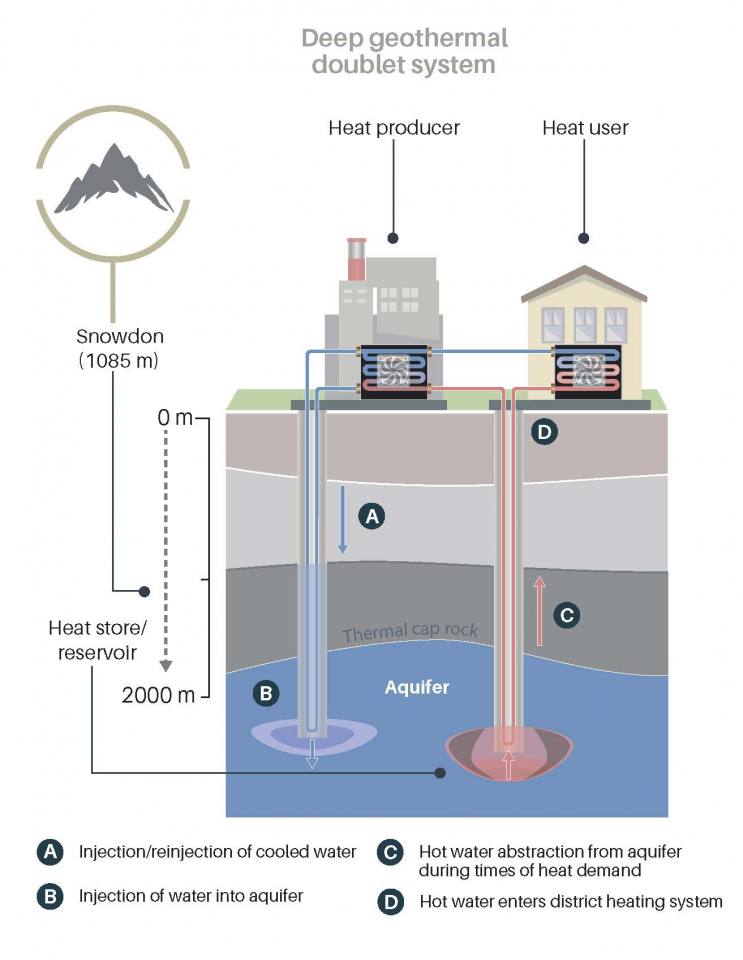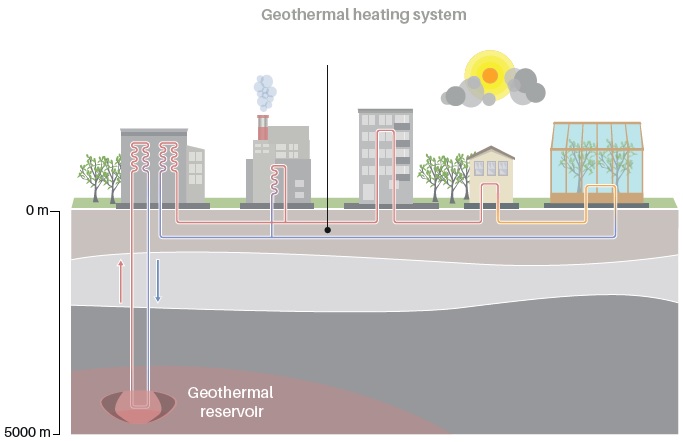Unlocking the deep geothermal energy potential of the Carboniferous Limestone Supergroup
How understanding the subsurface beneath our towns and cities may allow us to access geothermal energy for heating homes and powering the UK.
28/06/2021
The direct use of geothermal heat from the Carboniferous Limestone Supergroup (‘Carboniferous Limestone’) could make a significant contribution to delivering affordable, low-carbon heating to thousands of buildings, homes and offices through a district-heating system, as well as providing heating for agriculture and horticulture. Geothermal heat from the Carboniferous Limestone offers a clean alternative energy resource to help in the UK to achieve carbon net zero emissions by 2050.
Traditionally, the use of geothermal energy has focused on generating power using conventional steam-turbines in areas where high-temperatures (more than 160°C) occur at shallow depths (less than 500 m). Such settings are usually associated with plate boundaries and areas of active volcanism, as found in Iceland and Kenya. Now, due to technological advances in geothermal drilling, low-moderate temperature (over 60°C) deep geothermal energy can be utilised for industrial or residential (direct use) heating.
Deep geothermal energy is defined as the heat resource found at depths of between 500 m and 5000 m, where heat is transported by groundwater that is circulating within the pores of rocks in deep aquifers. These resources are exploited by doublet systems, which involve two deep boreholes, one for extracting the warm water and another one for reinjecting the cooled water back into the subsurface (Figure 1). As these fluids are pumped to surface they pass through a heat exchanger that transfers the heat into a district heating system (Figure 2). Such schemes have been developed in Belgium, the Netherlands and Germany.
In the UK, the Carboniferous Limestone is proven as a productive aquifer, hosting the circulation of deep hydrothermal fluids responsible for the thermal springs in Bath (Figure 3), Bristol, the Taff Valley and Buxton. The advantage of the Carboniferous Limestone as a resource is that it covers large areas of the UK subsurface and coincides with many large towns and cities. A number of schemes have successfully developed the Carboniferous Limestone geothermal resources for heating purposes, such as those in Belgium and the Netherlands.
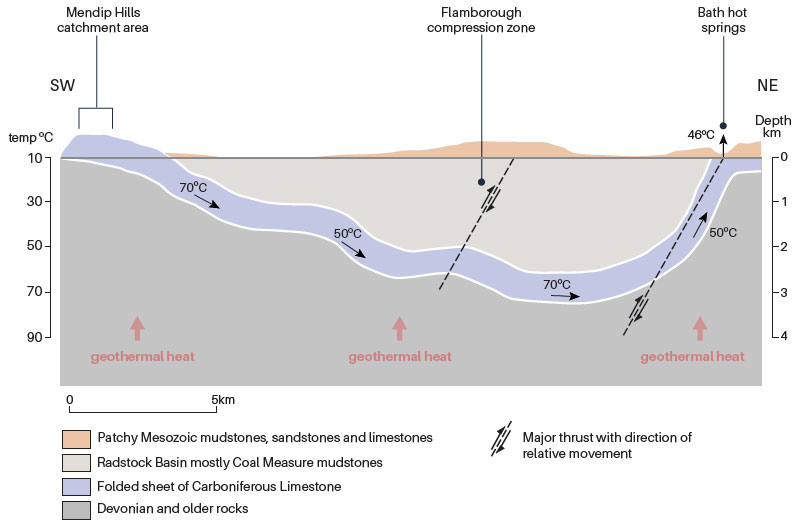
Figure 3: geological cross-section from the Mendip Hills to Bath illustrating the fluid flow model. Image based on Downing and Gray, 1986, adapted here by Gallois, 2007. BGS © UKRI.
The geothermal team at BGS has started a research programme looking at the utilisation of the deep geothermal energy held in the Carboniferous Limestone as a renewable heat resource for the UK.
During the Early Carboniferous period, the UK was situated near the equator experiencing a similar climate to that of modern-day tropics. Carbonate reefs developed across the northern and southern parts of the UK which, at that time, were separated by a strip of landmass called the Wales–Anglo–Brabant Massif (Figure 4). As a result of climate change 359–326 million years ago, sea levels dropped and these carbonate reefs became exposed to the rain (which acts as a very mild acid), causing the limestone to dissolve and creating underground drainage systems with sinkholes and caves. These features are preserved in the geological record as so-called palaeokarst.
These ‘karstified’ surfaces, along with solution-enhanced fractures and faults, provide connectivity in the rocks through which geothermal fluids can flow. BGS research focuses on identifying areas in the UK where we may find such deep flow systems (aquifers) and on assessing their potential for producing geothermal heat.
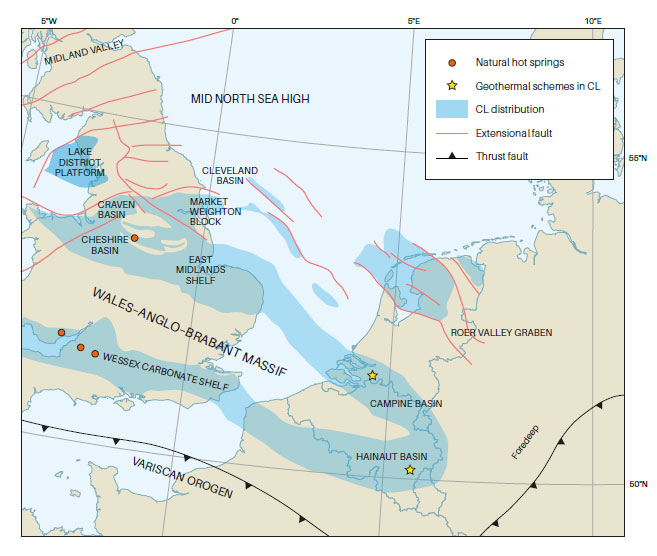
Figure 4: the distribution of Carboniferous Limestone (CL) platforms and shelves across north-west Europe and the UK. BGS © UKRI; based on Kombrink et al., 2010.
Sustainable development goals
The BGS research into the utilisation of deep geothermal energy in the Carboniferous Limestone as an energy resource for the UK directly addresses a number of the UN Sustainable Development Goals (SDGs).
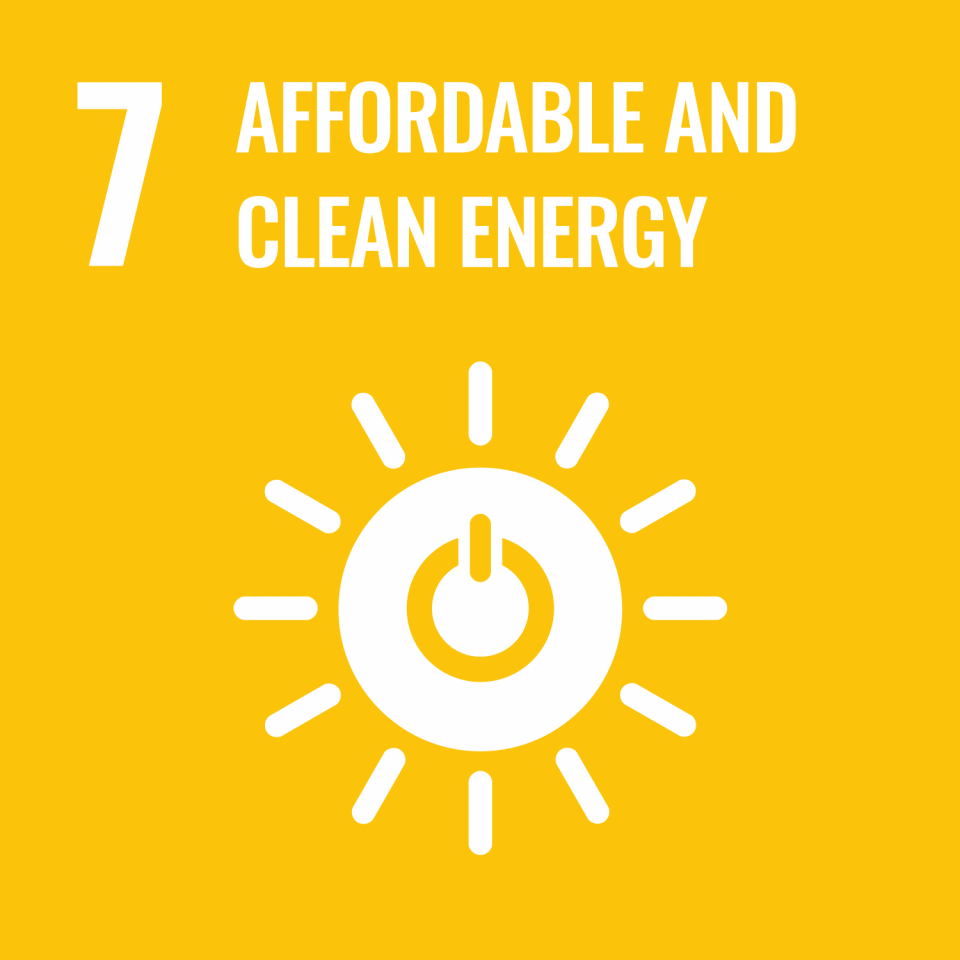
SDG 7: affordable and clean energy. Geothermal heat from the Carboniferous Limestone is an opportunity to deliver a contribution towards a portfolio of clean energy required to achieve net zero by 2050.

SDG 8: decent work and economic growth. Geothermal heat from the Carboniferous Limestone and research into it have potential to stimulate new geoenergy and geoengineering employment and supply chains.
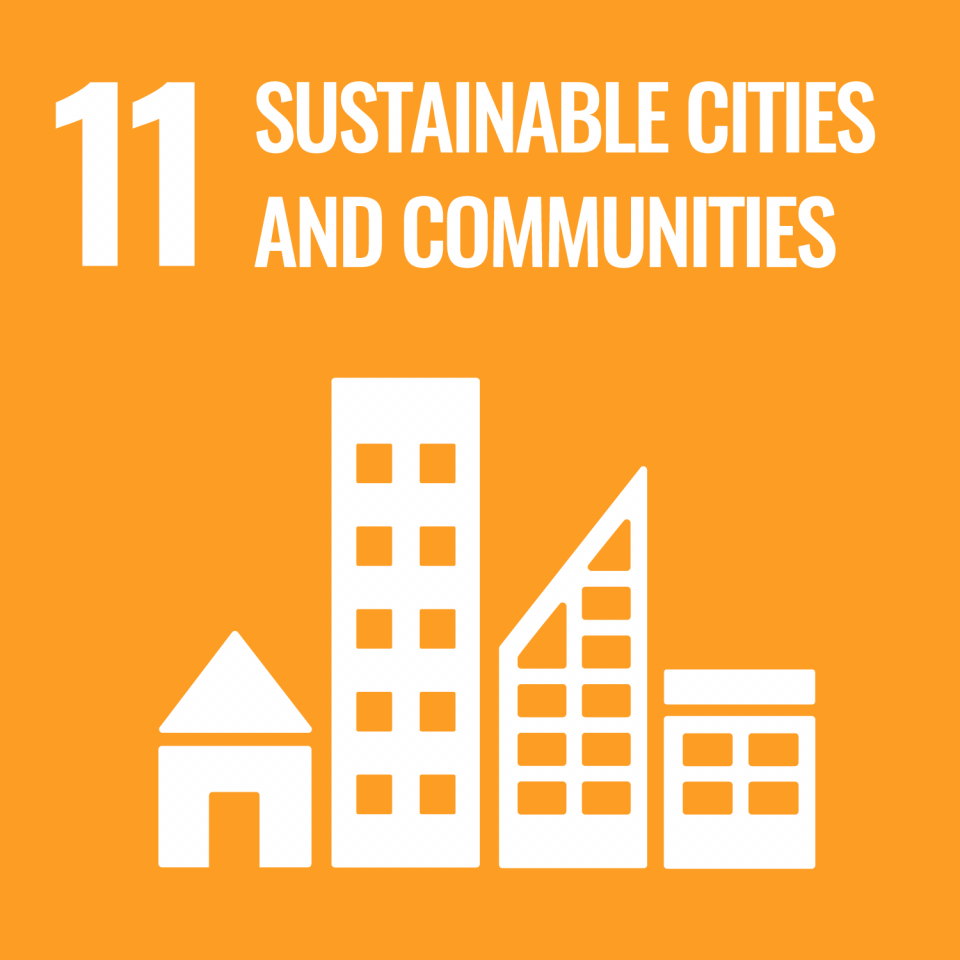
SDG 11: sustainable cities and communities. Geothermal heat from the Carboniferous Limestone is located in close proximity to UK towns, cities and agricultural regions. Therefore, it could provide a self-sustaining source of energy to these areas to help with domestic, industrial and agricultural demands for energy.

SDG 13: climate action. Geothermal heat from the Carboniferous Limestone can provide a source of energy to help the decarbonisation of heat and meeting net zero targets.
About the author
More information
Contact Darren Jones or visit geothermal energy for more information.
Relative topics
References
Abesser, C. 2020. Deep Impact: unlocking the potential of geothermal energy for affordable, low-carbon heating in the UK. British Geological Survey Science Briefing Note, September 2020. (Nottingham, UK: British Geological Survey.)
Abesser, C, Busby, J P, Pharaoh, T C, Bloodworth, A J, and Ward, R S. 2020. Unlocking the potential of geothermal energy in the UK. British Geological Survey Open Report OR/20/049 (unpublished).
Abesser, C, Schofield, D, Bonsor, H, and Ward, R. 2018. Who owns geothermal heat? British Geological Survey Science Briefing Note, November 2018 (unpublished).
Busby, J P. 2014. Geothermal energy in sedimentary basins in the UK. Hydrogeology Journal, Vol. 22(1), 129–141. DOI: http://dx.doi.org/10.1007/s10040-013-1054-4
Downing, R A, and Gray, D A. 1986. Geothermal resources of the United Kingdom. Journal of the Geological Society, Vol. 143, 499–507. DOI: https://doi.org/10.1144/gsjgs.143.3.0499
Gallois, R W. 2007. The formation of the hot springs at Bath Spa, UK. Geological Magazine, Vol. 144(4), 741–747. DOI: https://doi.org/10.1017/S0016756807003482
Gray, D A, and Downing, R A (editors). 1986. Geothermal Energy: the Potential in the United Kingdom. (Nottingham, UK: British Geological Survey.) ISBN: 978-0118843669
Jones, D, Pharaoh, T C, Randles, T, Kearsey, T I, and Newell, A. Phase 1 resource assessment of the deep geothermal potential of UK Carboniferous basins. British Geological Survey Internal Report IR/21/007.
Kombrink, H, Besly, B, Collinson, J B, et al. 2010. Chapter 6. Carboniferous. 81–89 in Petroleum Geological Atlas of the Southern Permian Basin. Doornenbal, J H, and Stevenson, A G (editors). (Houten, Netherlands: EAGE.)
Narayan, N, Gluyas, J, and Adams, C. 2018. Is the UK in hot water? Geoscientist, Vol. 28(9), 10-15. DOI: https://doi.org/10.1144/geosci2018-014



